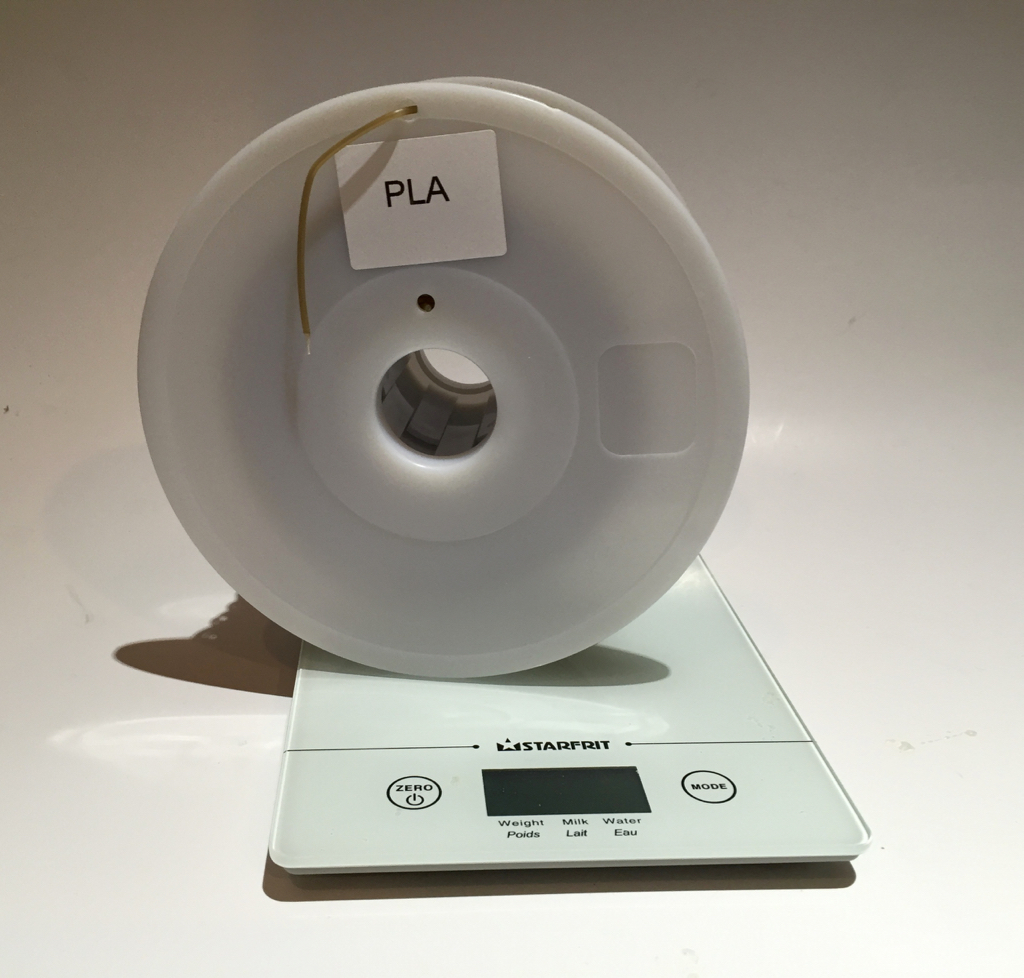
There are several ways to measure the amount of material required for a 3D print, but however it’s done, it should be practical.
Most desktop 3D printers employ filament-based material. It’s sold on spools in either 1.75mm or 3.00mm diameters and come in a variety of colors and plastics. But how do you know how much you’re getting?
There are several points in the 3D print lifecycle where you must know exactly how much material is involved:
- When you make a purchase of material; you must know what you’re buying.
- When you slice a 3D model and the software informs you of the amount of material estimated to be used to print it.
- When you’re loading (or checking) the filament loaded into a 3D printer to ensure you have sufficient material for the print.
If you don’t know the amounts at each point, you could have issues. You also must have the information in the same measurement units between each of these points.
The unfortunate thing is that measuring material is currently somewhat inconsistent:
Many vendors sell filament by weight, but others sell by length. Length is a problematic measurement because the amount of material is different depending on the diameter of the filament. One meter of 1.75mm filament contains 2,405 cubic mm of material, whereas one meter of 3.00mm filament contains 7,069 cubic mm of material.
Even worse, some materials are denser than others, particularly the recently emerging metal-infused filaments. If you purchased a 1kg spool of magnetic iron filament, for example, you may find that you cannot print nearly as many objects as you would on a 1kg spool of PLA plastic.
Another problem with length is that it is nearly impossible to measure length on a partially used spool of filament. If your slicing software says you need “10.5m of filament”, what do you do? Unroll the spool and size it with really long tape measure? We think not.
The only practical way for someone to measure the amount of filament on a spool is to weigh it (and subtract the weight of the spool itself). This is easily done with a digital scale that should be one of the tools in your 3D printer workshop.
But as we said, weight doesn’t tell the whole story. You may end up converting between weight and length, depending on what metric your software is telling you.
We found a great conversion table at Toybuilder Lab’s site, where they explain the difference in weight vs. volume for PLA and ABS plastic:
- PLA Density: 1.25 g/cm^3
- PLA Volume: 0.80 cm^3/g or 800 cm^3/kg
- 1.75 mm filament length for 1 kg spool: ~ 330 meters / ~ 1080 feet
- 3.00 mm filament length for 1 kg spool: ~ 110 meters / ~ 360 feet
- ABS Density: 1.04 g/cm^3
- ABSVolume: 0.96 cm^3/g or 960 cm^3/kg
- 1.75 mm filament length for 1 kg spool: ~ 400 meters / ~ 1310 feet
- 3.00 mm filament length for 1 kg spool: ~ 130 meters / ~ 430 feet
Using these factors, it’s pretty easy to convert into length from weight, permitting you to verify that you have enough material to do a print, even if your slicing software is telling you the requirement in meters. It’s also possible to do this style of calculation with other materials, too.
Is volume the correct metric for 3D printer filament instead of weight or length? Perhaps theoretically, but we still don’t know of an easy way to measure the volume of a partially used spool without weighing it anyway.
Via ToyBuilder Labs

